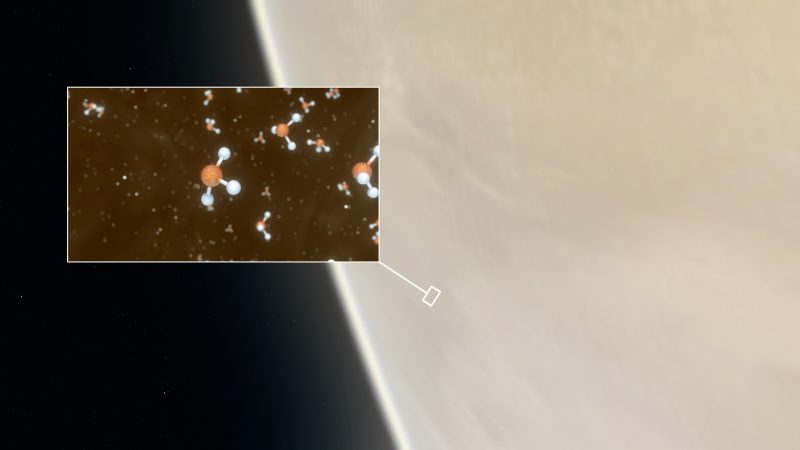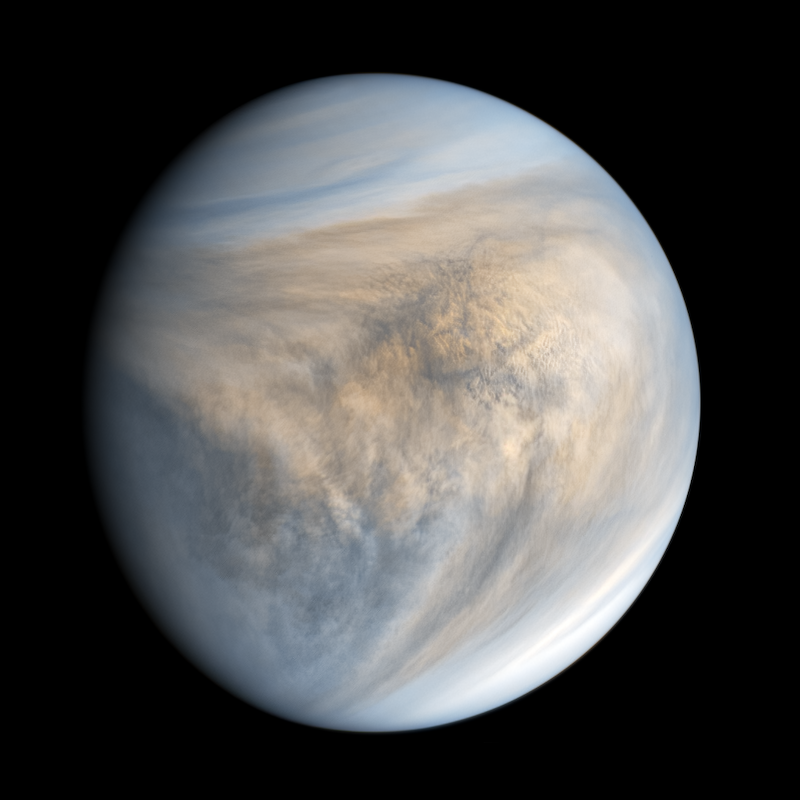
The reported discovery of phosphine in the atmosphere of Venus in 2020 ignited fierce debate. On Earth, phosphine is only produced by microbes or artificially in a lab. So, could it be evidence of life in Venus’ clouds? The controversy continues to this day, with some astronomers saying they failed to re-detect it, and others saying they did. Now, the lead scientist in the original discovery, Jane Greaves at Cardiff University in Wales, U.K., says that her team has again re-confirmed the existence of phosphine. This time, they found it deeper in the atmosphere, with additional evidence that there’s a steady source of the gas. Greaves presented the newest findings on July 6, 2023, at the National Astronomy Meeting 2023 at Cardiff University.
Jamie Carter at Forbes covered the intriguing news on July 6, 2023.
Astronomer Chris Lintott tweeted about the latest update:
Update from @jgreaves6 at #nam2023 on phosphine in Venus' atmosphere (a signature of life or odd chemistry): detections confirmed in JCMT data from 2022 and May 2023. Consistent line depth so steady source (?).
— chrislintott (@chrislintott) July 6, 2023
Initial analysis shows it is consistent with being in the upper clouds. Argument about source – volcanoes v life – continues.
— chrislintott (@chrislintott) July 6, 2023
Science writer Corey S. Powell also tweeted:
Good summary of the latest evidence for phosphine on Venus. It's a potential indication of microbial life in the clouds, and *definitely* deserves a closer look! https://t.co/4gvC67I4o6 pic.twitter.com/7lVjADSaDZ
— Corey S. Powell (@coreyspowell) July 7, 2023
Extensive new data
The original detection data in 2020 came from eight hours of observations with the James Clerk Maxwell Telescope (JCMT) in Hawaii. The researchers also made additional observations using the Atacama Large Millimeter/submillimeter Array (ALMA) in Chile. The newest data, however, from February 2022 and May 2023, are primarily from the first 50 of 200 hours of observations. Those observations also extend deeper into the atmosphere. Additional data also come from NASA’s Stratospheric Observatory for Infrared Astronomy (SOFIA) airplane. SOFIA, unfortunately, ended its mission in 2022 after NASA decommissioned it.
The data suggest there is a steady source of the gas. As Greaves told Forbes:
We now have five detections over the last few years, from three different sets of instruments, and from many methods of processing the data. We’re getting a clue here that there is some steady source, which is the point of legacy surveys, to show whether that’s true or not.
Phosphine or no phosphine?
Since 2020, the controversy has continued. Other astronomers reported finding no phosphine in Venus’ atmosphere. But Greaves and her team were adamant that the phosphine was there. As Carter wrote in Forbes:
In November 2021 scientists using SOFIA found no traces of phosphine, but Greaves’ team’s reprocessing of the data revealed phosphine in the planet’s upper clouds. ‘I did one tiny tweak to the way they looked at the data and you can certainly get something out,’ said Greaves. ‘I didn’t do anything elaborate, just standard techniques.’
At the National Astronomy Meeting, Greaves also noted that there is possible evidence for the phosphine in old data from the Pioneer Venus 1 mission from 1978. EarthSky previously reported on this as well.
In March 2021, a study from Rakesh Mogul of Cal Poly Pomona supported the original finding of phosphine and went further. It suggested that other “biologically relevant chemicals” in Venus’ atmosphere appear to be in a state of disequilibrium: another hallmark of life.

Fast-moving molecules
One of the most intriguing aspects of the new phosphine detections is that the phosphine has what Greaves and her colleagues call “wings.” Essentially, the molecules are moving quickly through the atmosphere. As Greaves explained:
We’ve got these absorption lines in the atmosphere that spread over a big range of wavelengths; we’re seeing in effect molecules moving about really fast. We’re looking at the tops of the clouds, or middle of the clouds even, and this is the first time we’ve been able to do this.
Phosphine on Venus and … life?
What that source is, is still unknown. On Venus, there are two main possibilities. One is volcanoes and the other is … life.
Life? On Venus? Is the planet hot enough to melt lead with crushing atmospheric pressure? Yes, but that’s at the surface of the planet. Higher up in the atmosphere and in the cloud layers, it’s a different story. Temperatures are much more comfortable, with pressures similar to Earth. Various studies over the years have shown that microbial life could theoretically exist in Venus’ atmosphere, like airborne bacteria on Earth. It would need to evolve and adapt to deal with the sulfuric acid and little water in the clouds, but it’s still possible. Microbes like this exist on Earth, called extremophiles.
What about volcanoes?
Volcanoes are plausible as a source for the phosphine, although some other studies have suggested they wouldn’t produce as much of the gas as has been reported. There is, however, new evidence for active volcanoes on Venus, so they cannot be ruled out just yet.
Greaves thinks that since the amount of phosphine doesn’t seem to vary much, that may make a volcanic explanation less likely. As IFLScience noted:
For example, the amount of phosphine doesn’t change that much across the various observations. As a comparison, sulfur dioxide, which is believed to be related to volcanism on Venus, can vary wildly, more than 10 times from year to year or even shorter timescales.
Greaves said:
The phosphine seems to be only varying at most by maybe up to about twice as much, or down to about half as much. It is not really variable, and I think that’s important in the context of interpretations.
The researchers are continuing their observations of Venus with the James Clerk Maxwell Telescope, with about 150 hours left. As Greaves told Forbes:
Venus is approaching the Earth at the moment. So, we start tonight in Hawaii and tomorrow we get the data. It’s very exciting.
The team will also monitor other molecules like sulfur dioxide to see if there are any correlations to the limited variances of phosphine.
Bottom line: Astrobiologist Jane Greaves and her team report that they have re-confirmed phosphine on Venus, deep in the atmosphere. The gas appears to have a steady source.











